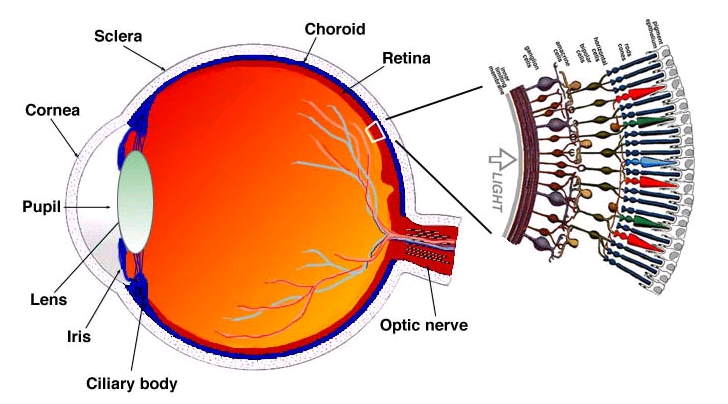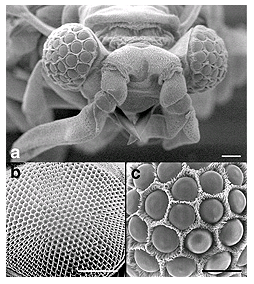
Eyes
The Spectrometers of Animals and Insects

 |
Eyes The Spectrometers of Animals and Insects |
 |
|
Introduction
Many people know that cats and dogs are color blind, but commonly wrongly believe that this means that they only see in black and white. So what does it really mean to be color blind? In humans, color-blindness can come in many forms. The majority of humans with color-blindness are deuteranomolous, meaning they are "green weak," and tend to see red, orange, yellow and green as more red than they actually are. Other color-blind humans are protonamolous, meaning they are "red weak," and the colors they see tend to shift to more green than they actually are. There are other types of human color-blindness as well, and what about the cats and dogs? Well, it turns out that studies conflict on this issue. However, many scientists believe that dogs tend to see in two hues, one in the violet or blue-violet range, and one in the greenish-yellow/yellow/red range. Cats are similar. This means that they can distinguish blues quite well, but see reds, greens and yellows as similar hues. So why is this the case? What causes this color blindness in cats, dogs and humans? The reason hits upon the core subject of this series of webpages. It has to do with the special parts of the eye called rods and cones. These are what make the eye act much like a spectrometer does when measuring absorption and transmittance of lightwaves of a substance. In the case of cats and dogs, ocular adaptations in their rods and cones help them to have heightened visual acuity in poorly lit or dark places. In the case of humans, it is less of a positive adaptation, and more of a nuisance (think how annoying it would be if you couldn't distinguish the colors on a traffic light!). In these webpages, by clicking the links below, you can learn about the structure of the eye, and its similarity to the structure of a basic spectrometer. You can also learn about how birds and insects have developed adaptations that increase their range of visible wavelengths, an adaptation that helps them find food, or a good mate. There is also a page about how humans have developed technology to try and enhance the human range of visible wavelengths, and a page with a teaching unit that can be used to introduce students to some of the more basic aspects of these concepts. |
|
Resources for this page
http://colorvisiontesting.com/color2.htmpsychlops.psy.uconn.edu/eric/class/dogvision.html www.veterinaryvision.com/See.htm |
| The Eye as Spectrometer |
Bird and
Insect Ocular Adaptations |
| Improving
the Human Visible Range |
Teaching Unit |